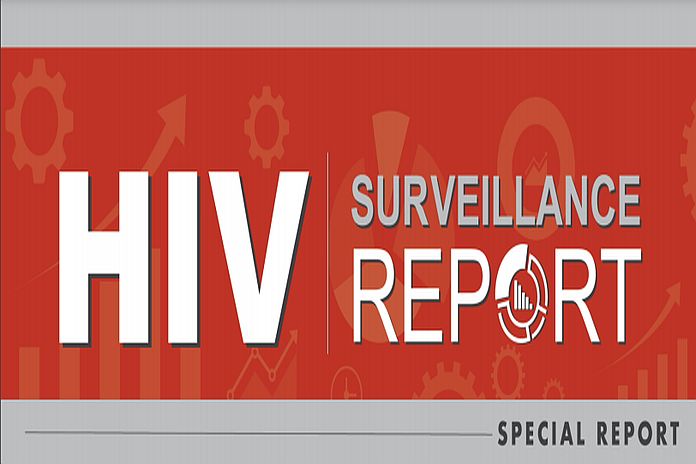ATLANTA, USA – A Centers for Disease Control and Prevention (CDC) report released in advance of National Transgender HIV Testing Day found that four in ten transgender women surveyed in seven major US cities have HIV. The report, one of the most comprehensive surveys of transgender women in the United States to date, also revealed that nearly two-thirds of African American/Black transgender women and more than one-third of Hispanic/Latina transgender women surveyed have HIV.
These findings demonstrate the pressing need for scaled-up HIV prevention and care strategies for transgender women. CDC is actively working to address disparities through strategic program funding and partnerships throughout the nation.
Interviews conducted in 2019 through early 2020 with 1,608 transgender women living in Atlanta, Los Angeles, New Orleans, New York City, Philadelphia, San Francisco, and Seattle found that 42 percent of respondents with a valid HIV test result had HIV.
The report found stark racial and ethnic differences in HIV rates among respondents. Sixty-two percent of Black transgender women and 35 percent of Hispanic/Latina transgender women had HIV, compared to 17 percent of white transgender women. Furthermore, nearly two-thirds of the women surveyed lived at or below the poverty level, and 42 percent had experienced homelessness in the past 12 months.
“These data provide a clear and compelling picture of the severe toll of HIV among transgender women and the social and economic factors including systemic racism and transphobia — that are contributing to this unacceptable burden,” said Demetre Daskalakis, MD, MPH, director of CDC’s Division of HIV/AIDS Prevention. “Reducing HIV in these communities will require that public health and other providers of social and prevention services design innovative and comprehensive status-neutral solutions to overcome barriers to whole person prevention and care.”
A status-neutral approach to HIV services means ongoing engagement in HIV prevention, care, and treatment regardless of a person’s HIV status. HIV testing serves as the gateway to services for HIV prevention or treatment.
The study also examined use of specific prevention services and found that only 32 percent of participants without HIV reported using pre-exposure prophylaxis (PrEP). PrEP is recommended for people who are at risk of HIV exposure from sex or injection drug use. When taken as prescribed, PrEP is highly effective at preventing HIV. Previous studies have found that low uptake of PrEP among transgender women may be due to a range of factors, including medical mistrust due to experiences of transphobia, lack of trans-inclusive marketing, and concerns about drug interactions between hormones and PrEP. In this study, 67 percent of participants without HIV were taking hormones for gender affirmation.
These results show how critical it is that HIV prevention and care efforts reach beyond traditional settings and are culturally informed and responsive to community needs. To reverse these findings, increased partnerships with the transgender community and expanded efforts are essential to eliminate socioeconomic barriers to care, including systemic racism, poverty, and stigma, and address unequal access to health care, educational inequity, housing instability, and employment circumstances.
As part of CDC’s ongoing mission to confront HIV and the social determinants of the epidemic, CDC has accelerated efforts to reduce health disparities among transgender women and other groups. Transgender people are a priority for CDC’s major HIV prevention funding programs, including funding to state and local health departments and community-based organizations (CBOs). For example, CDC is providing 30 CBOs with focused funding of nearly $11 million per year over five years to support HIV testing, linkage to care, and prevention services with a focus on transgender people.
The ongoing Ending the HIV Epidemic initiative also supports efforts to overcome barriers to HIV prevention and treatment in the 57 areas of the country hardest hit by HIV, including the seven cities where this survey was done. Ending the HIV Epidemic priority areas account for about two-thirds of new infections among Blacks and Hispanics/Latinos in the U.S. At the heart of the Ending the HIV Epidemic initiative are community-driven plans that require funded recipients to actively engage people with, and at risk for, HIV in the design and implementation of localized HIV prevention activities. This includes the use or expansion of innovative, community-tailored HIV testing and care strategies for transgender people.
National Transgender HIV Testing Day is observed each year on April 18 and is an opportunity to recognize the importance of routine HIV testing and status awareness — as well as HIV prevention and patient-centered care — for transgender and gender non-binary people.
“HIV testing is the gateway to all treatment and prevention, and expanding testing means more transgender women are aware of their status and can engage in the care they need — if we help them connect to appropriate and responsive care services,” said Joseph Prejean, PhD, acting deputy director for surveillance, epidemiology and laboratory science in CDC’s Division of HIV/AIDS Prevention.
Source: CDC






